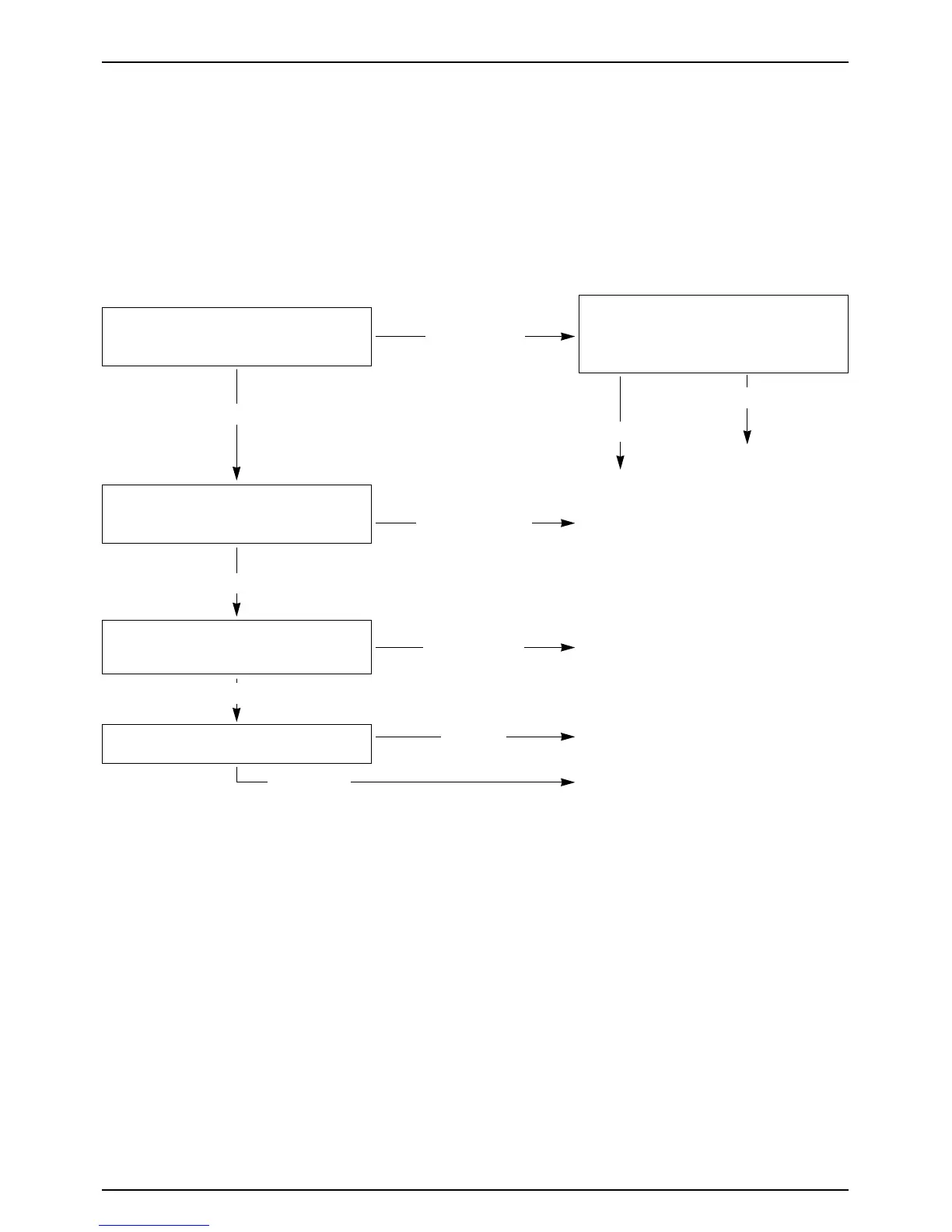17-3
STARTER SYSTEM
TROUBLESHOOTING
Starter motor will not turn.
● Check for a blown main fuse before servicing.
● Check that the stop light is correctly adjusted.
● Check that the side stand is positioned in the condition under which the engine can be started.
With the ignition switch “ON”and squeeze
the brake lever, check for a“click” sound
from starter magnetic switch. (⇨17-7)
Connect the starter motor (+) terminal to the
battery positive terminal. (Because a large
amount of current flows, do not use thin
wires). (⇨17-4)
● Faulty starter motor.
● Loose or disconnected
wire or cable.
● Faulty starter switch.
● Faulty side stand switch.
● Loose or poor contact at connector.
● Open circuit in wire harness.
● Faulty ignition switch or starter switch.
● Loose or poor contact at connector.
● Open circuit in wire harness.
● Faulty brake stop switch.
● Loose or poor contact at starter magnetic
switch coupler.
● Faulty starter magnetic switch.
Disconnect starter magnetic switch coupler,
and check the starter magnetic switch coil
ground wire. (⇨17-7)
Connect the starter magnetic switch coupler.
Measure the starter magnetic voltage at the
starter magnetic switch coupler. (⇨17-7)
Check the starter magnetic switch operation.
(⇨17-8)
CLICKS
NO CLICK.
Starter motor does not turn.
Starter motor turns.
CONTINUITY.
VOLTAGE MEASURED.
NO CONTINUITY.
NO VOLTAGE.
NORMAL
ABNORMAL
Starter motor turns slowly.
● Low specific gravity in battery. (or dead battery)
● Poorly connected battery terminal cable.
● Poorly connected starter motor cable.
● Faulty starter motor.
● Poorly connected battery ground cable.
● Damaged or worn brush.
Starter motor and engine turns, but engine does not start.
● Faulty ignition system.
● Engine problems.
Starter motor turns, but engine does not turn over.
● Starter motor is running backwards.
-Brushes assembled improperly.
-Case assembled improperly.
-Terminals connected improperly.
● Faulty starter clutch.
● Damaged starter gear.

